Andi Sutton contributed this report on Wearable Gardens.
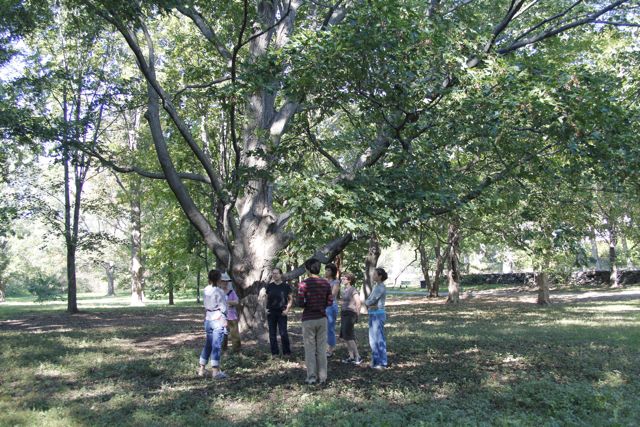
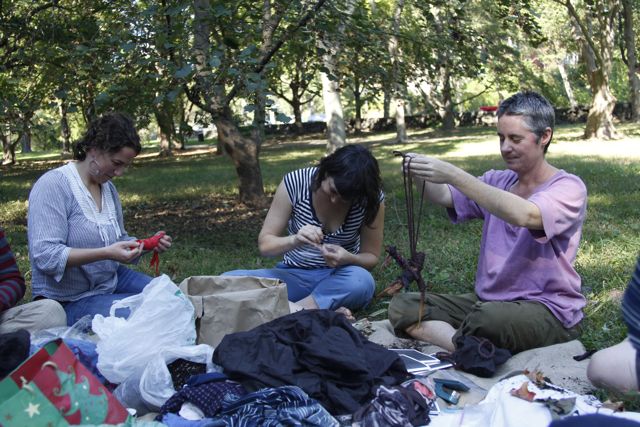
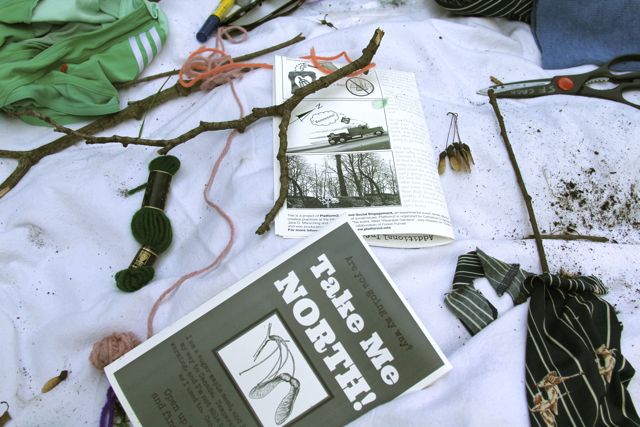
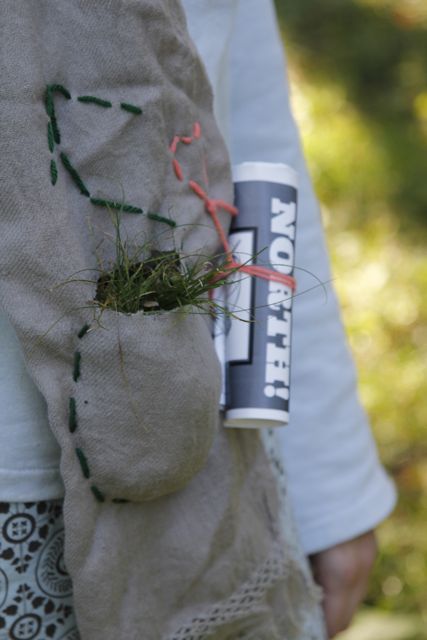
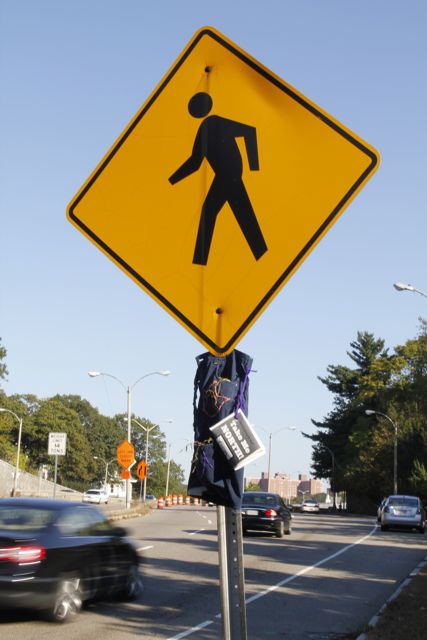
On a sunny, unseasonably warm October afternoon, nine people gathered in a circle and wrote a story. The story was of a tree seed – the sugar maple – at risk of survival due to the environmental impacts of climate change, and the possibilities of its migration north. It was a story in action and of action, told next to a 200 year old Sugar Maple at the Arnold Arboretum in Boston, Massachusetts, in the midst of the largest and most diverse collection of maple trees (genus: Acer) in the world.
Participants spread around the maple grove, picking out seeds that looked mature, dried, and worn. A viable seed pod needs at least 4 maple seeds (often maples drop seed pairs with only one half of the pair carrying the ability to germinate, and including 4 or more improved the likelihood of the wearable garden’s survival.) Around the seeds, participants packed dirt, moss, and leaves. to protect them during the next 3-5 months in a cold, damp environment where they are exposed to friction. Participants addressed the design challenge of making a wearable pocket that could travel on a human body, that could keep the seeds moist and cool, and have some level of friction through its movement. The creations varied: seed bearing scarves, an armpit band, a garter belt, a jacket sleeve and a pocket-on-a-stick. The items were decorated with embroidery, with lace, with yarn and with instructions.
To close, each wearable garden was attached to a map to aid in sending these seeds on their way north. The map included information on the various viable territories for the maple seed, and how they may change between now and the year 2100, along with how to care for the seeds. It included 3 different highway routes up the East Coast, each ending up in a different region in Canada projected to have the most conducive climate to Sugar Maples 100 years from now. Each participant had ideas in mind of where they would leave their pods. One participant was on his way to Maine that very weekend and intended to leave it by a maple sugar shack at the trailhead where he was going to go hiking. Another was headed to Vermont. Yet another had plans to visit a CSA farm, also in Maine, and planned to leave her creations there. One wearable garden was hung on a pedestrian crossing sign on a nearby highway, along with the map and a wish of safe journeys.
Oct. 8, 2011
1-3 PM
Arnold Arboretum
—-
A project of Platform2: Art and Social Engagement, an experimental event series that sits somewhere between a classroom, community organizing, and 1960s happenings. Platform2 is organized by Catherine D’Ignazio (kanarinka), Jane D. Marsching, Savić Rasović and Andi Sutton. Andi Sutton is an artist whose current practice explores the ways that duration, dialogue, endurance and exhaustion can push socially prescribed boundaries of human interaction. Working in a solo and collective context, her projects take the form of web, media, and street intervention, video and performance art installation. Her works have been shown nationally in shows and festivals such as Pathogeographies (2007), Contaminate II (2007), PURE: An Exhibition (2006), The Paper Show (2005), Mix NYC (2003), Better Homes and Guardians (2003), Politically Charged (2002), among others.